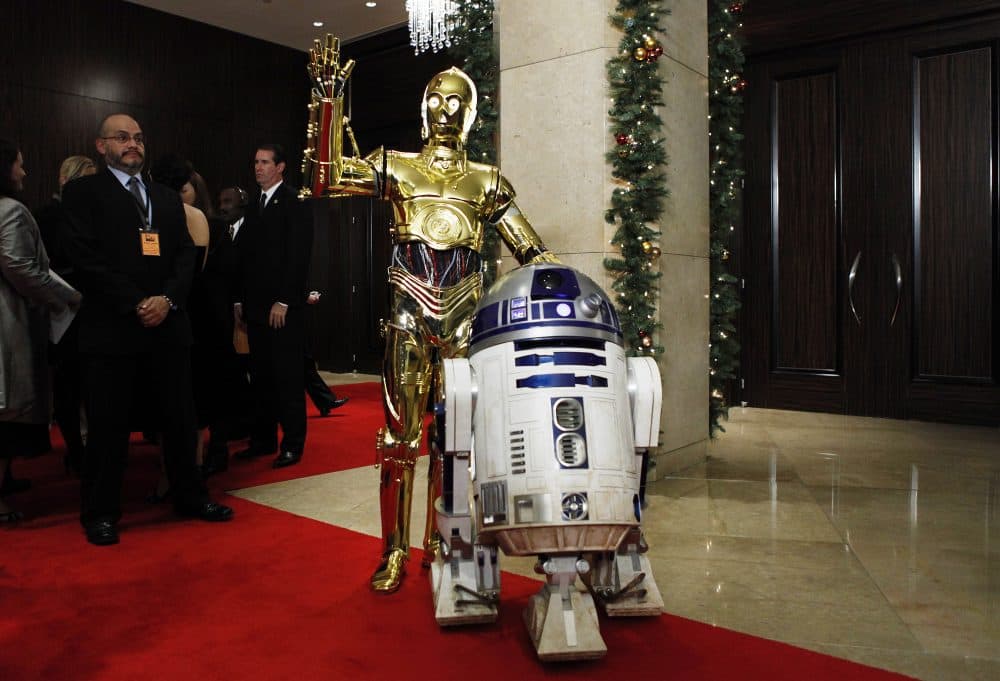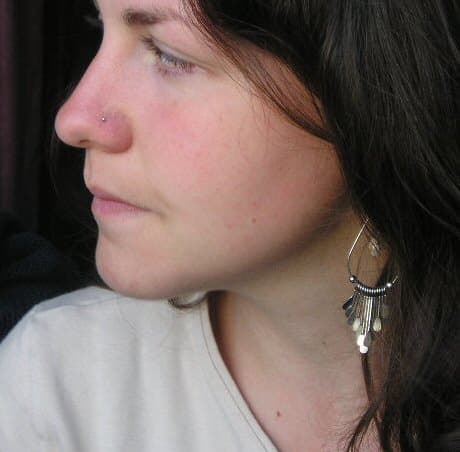Advertisement
Commentary
I'm Fed Up With Humanity. It's Time For An Alien Intervention

Let’s build a gigantic SOS visible from space. We can make it concrete or transparent, attractive or atrocious -- it doesn't matter, so long as it sends the message.
Just go with me here. Suspend your disbelief.
Pretend we’ve found a way to ask for help in a universal language, perhaps prime numbers that convey desperation?
I suppose bombs, hate crimes and melted ice caps might do the trick, provided someone out there is watching, but I’d rather not go that route. Regardless, the message is the same: Send help.
Send an alien race. Send the robots. Send the robot aliens.
There’s precedent for it in science fiction. And sometimes it goes pretty well. It’s all relative, of course.
In Arthur Clarke’s "Childhood’s End," aliens come to Earth to stop humanity’s self-destruction. They fix everything — no more war, poverty, famine, disease, or crime. People live in utopian bliss for a while, and eventually the human race joins an entity called the Overmind, which Clarke depicts as the brahman -- an infinite, omnipresent, absolute reality. Even though it’s not quite that easy in the book (such transitions are never entirely painless) the end result sounds good to me, particularly considering our current state of affairs. In the Overmind, ego doesn’t exist. Neither does race, gender, religion, nor any other divisive human quality. Sign me up, even if it means I’m not really me anymore. Then not-me wouldn’t have panic attacks upon reading the daily news.
Paradigms shift in dizzying fashion as the secrets of space and time unfold. With perspective, earthly, human problems seem trifling.
In Liu Cixin’s "The Three-Body Problem," astrophysicist Ye Wenjie narrowly escapes persecution after reading "Silent Spring" and secretly broadcasts a transmission into space. She receives a response from a representative of the Trisolarans, who warns her that the race is searching for a new home world and will conquer Earth’s inhabitants. But Wenjie invites the Trisolarans anyway, figuring that whatever they do can’t be any worse than what humans do to each other and to the planet. What happens next comprises a brilliant trilogy I wouldn’t dare spoil, but as in "Childhood’s End," the human race transforms. It no longer sees itself as the center of the universe or the pinnacle of all life. Paradigms shift in dizzying fashion as the secrets of space and time unfold. With perspective, earthly, human problems seem trifling.
In Carl Sagan’s "Contact," aliens from the Vega star system contact humanity after receiving the television broadcast of Hitler at the 1936 Berlin Olympics. Concerned with the implications of Nazism, the munificent aliens try to unite mankind by bestowing immeasurable technological insights — including interstellar travel via wormholes. Plus, they let protagonist Ellie Arroway see her deceased dad, or at least a thoroughly convincing simulacrum of him, again. The Vegans ability to advance technology without sacrificing empathy makes them worthy intergalactic mentors.
Advertisement
The problem with soliciting help from aliens is time. In "Contact," it takes 26 years for broadcasts and messages to travel between Earth and Vegan. It takes hundreds of years for the Trisolarans to arrive. At the rate we’re going, we don’t have that long.
Robots, then?
For all the vicious T1000s and cylons we read about or see in the movies, there are kinder robots like Johnny 5, Data, Bishop, R2D2 and C3P0 — robots that want to help humans either because they’re programmed to or because they feel some affection for us. No matter the motivation, we could use their help.

Robots may run things better than we do, as in Isaac Asimov’s world. Asimov’s first law of robotics — “a robot may not harm a human or allow a human to come to harm” — is designed to overcome humans’ fear of robots. The irony is that robots treat humans better than humans treat one another. In Asimov’s story “Evidence,” people suspect that renowned lawyer and mayoral candidate Stephen Byerley is a robot. Why? He never seeks the death penalty. No one sees him eat, drink or sleep. Most of all, he’s “decent.” His opponents’ attempts to discredit him fail. Throughout the story, Byerley, whose robotic identity is suggested throughout, is a better lawyer, politician and humanitarian than the humans in the story. Can we put some of these robots in Congress?
Even more important is Asimov’s zeroth law, which holds that “a robot may not harm humanity or allow humanity to come to harm.” The distinction is important — under the first law, a robot cannot attack a gunman to save a group of people, but under the zeroth law, it can. The zeroth law allows robots to act in the interest of the greater good. In Asimov’s “The Evitable Conflict,” Byerley, now a regional "World Coordinator," receives information about a number of mechanical glitches occurring around the world. Byerley deduces that robots are deliberately overriding human commands to steer Earth and humanity in a safer direction. I can think of some vacancies these robots could fill.
Maybe we can get the best of both worlds, so to speak. Scientists believe extraterrestrial life forms are likely to be older than terrestrial ones, given the relatively young age of Earth (4.6 billion years to the universe’s 13.7 billion years), and thus, more technologically advanced. It’s quite possible that intelligent extraterrestrial life is digital, rather than biological. So much the better. These life forms will have proven their ability to survive through eons and could bestow on us invaluable historical, social and technological wisdom. Intelligent beings that have avoided blowing themselves up would be good role models. Perhaps they would see enough potential in humanity to take us under their wing. And no travel ban or wall would stop them.
